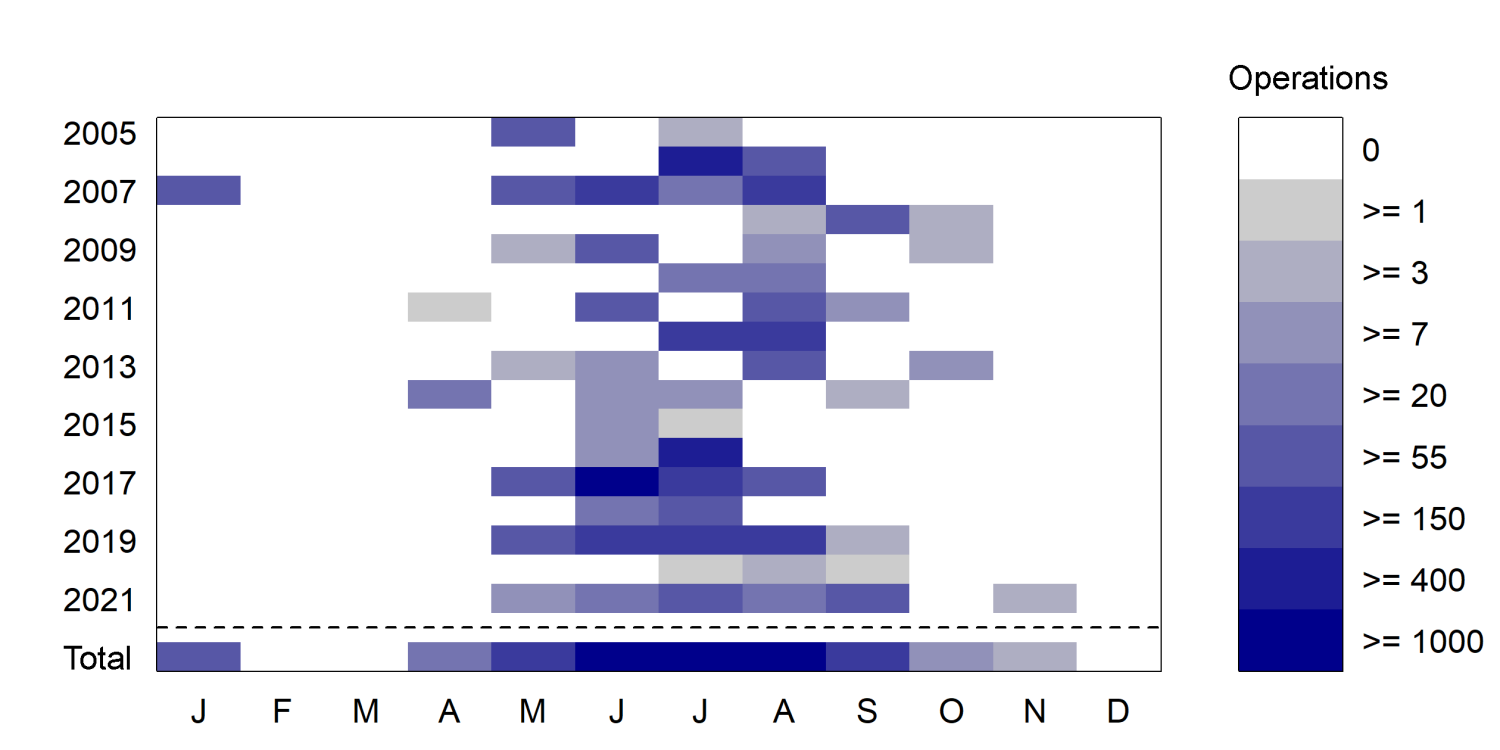The heavy rainfall hazard map illustrates the spatial extent of floods, flood depths (water level above ground), and flow velocities, providing insights into heavy rainfall-induced floods for different scenarios, including rare, extraordinary, and extreme events.
The heavy rainfall hazard map provides a detailed assessment of the spatial extent of floods, flood depths, and flow velocities for a variety of heavy rainfall scenarios. They play a crucial role in wastewater planning and are the cornerstone of the municipal heavy rainfall risk management. For the State of Berlin, these maps are particularly important for managing the heavy rainfall risks associated with rare (T = 30a, T = 50a according to KOSTRA-DWD as Euler Type II with a duration of 180 minutes), extraordinary (T = 100a according to KOSTRA-DWD as Euler Type II with a duration of 180 minutes), and extreme events (TExtrem = 100mm in 60 minutes as block rainfall).
The water level, or rather the water level above ground or inundation depth, is categorised into four classes. The highest observed water level is shown for each scenario. Levels below 0.1 m are not displayed, as the accuracy of the method and the underlying data does not allow for reliable assessments at these depths. Damage may still occur at these water levels, however. There is also an increased risk of accidents (e.g. due to aquaplaning). With inundation depths of 0.1 m or more, the risk of water penetrating into buildings or lower-lying parts of structures, such as basement flats, garage entrances, or underpasses, especially through ground-level features such as windows or light shafts, is considerably greater. Apart from the immediate risk of drowning, particularly for infants and children, there is also the risk of electric shock. Moreover, at a water level of 0.1 to 0.3 m, traffic is restricted, and as inundation depths rise (0.3–0.5
m), these risks amplify. Water is able to penetrate into buildings with slightly higher basement windows or raised entrances. Escape routes may be blocked due to the static pressure of the water. Furthermore, there is a risk of damage to parked vehicles, and roads become impassable for standard vehicles. Higher flood depths (> 0.5 m) significantly increase the risk of drowning for both children and adults. The static load on building and structural components increases, potentially posing an additional threat to human health in the event of collapse. At this point, only specialised vehicles are able to navigate the roads.
The flow velocity and direction (colour-coded flow arrows), which are based on the depth-averaged maximum velocity, are displayed when the map is zoomed in to a scale of 1:25,000 or more. From this, the flow paths as well as the origin and catchment area of local floods may be derived. Even minor flow velocities of up to 0.5 m/s may pose a risk to older individuals, those with limited mobility, infants, and children, when traversing a flow path, especially at greater depths. Seals may break due to increased pressure. With accelerating flow velocities (0.5–1.0 m/s), the risk increases during the crossing of a runoff path, which then also applies to adults. Due to the combination of static and dynamic forces the risk of failure of building and structural components increases. Higher flow velocities (> 1.0 m/s) may result in larger solid objects being carried by the flow (e.g., cars, tree trunks). These objects not only pose a direct threat to
human safety but may also cause additional damage to building and structural components, amplifying the risk of failure. The water may be contaminated by foreign substances such as oil, faecal matter, or chemicals, leading to greater damage. For instance, damaged oil tanks not only jeopardise the building they are in, but also affect neighbouring structures as well as the environment. The structural integrity may also be compromised by undermining, potentially leading to the collapse of building and structural components. Time plays a key role in heavy rainfall events. The longer water persists, the greater the risk of further structural damage.
The heavy rainfall hazard maps feature additional information. Apart from plots, they also display bodies of water, vegetation areas, roads, parking areas, sidewalks, tree pits, median strips and verges, railway tracks, and building functions. These details are presented as background maps and reflect the current status, rather than that of the heavy rainfall hazard map.
Please note, the heavy rainfall hazard map does not exempt individual projects from the responsibility to investigate and verify the hydraulic conditions on site. It is required to compare the model with the actual on-site conditions. All information is provided without a guarantee of accuracy. No liability will be assumed for damages resulting from the use of the retrieved information.

